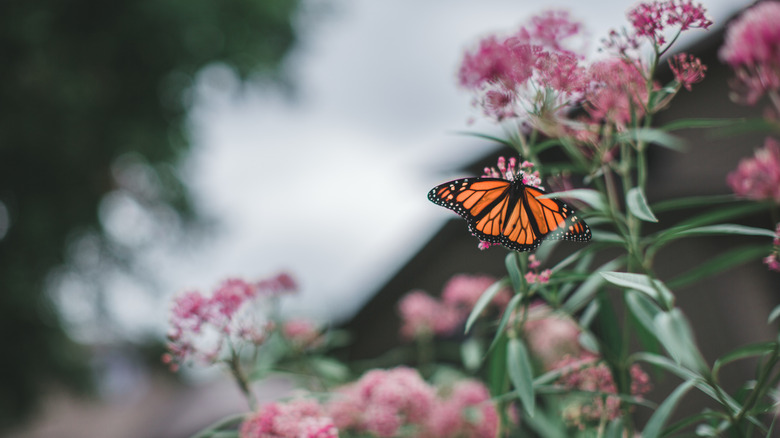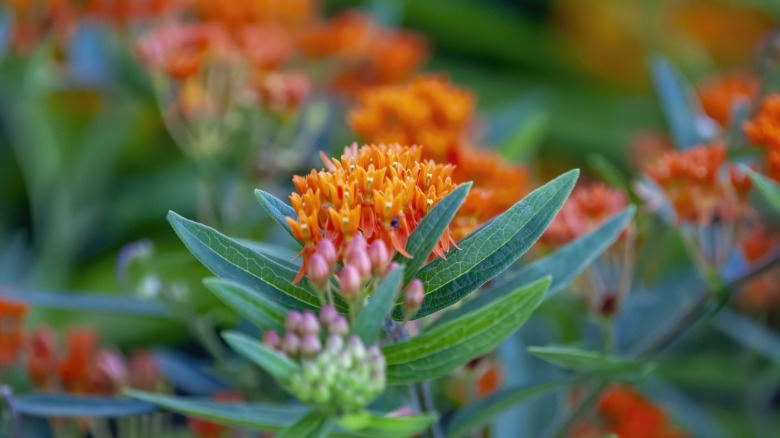Avoid A Common Mistake When Planting Milkweed For A Diverse Butterfly Garden
Milkweed, the common name of the genus Asclepias, is an incredibly popular and diverse native plant that grows across the United States, from the Northeast to the Great Lakes to the Southwest. If you are looking for plants that will fill your garden with a variety of butterflies, milkweed is one of the best. But with over 100 species, it's easy to become overwhelmed with choice. Despite what you might think, not every milkweed plant is the same, and not every species is right for your garden. It's a common mistake to pick a random type of milkweed to grow in your garden without knowing anything about it.
Many species of this wildflower share milky, latex sap in their stems and serve as an attraction for various butterflies and other insects. However, not all milkweed plants are alike in characteristics, color, and optimum growing conditions. Some species are more suited than others to act as host plants for specific insects. If you are looking to attract the endangered monarch butterfly, only 30 milkweed species are used by them regularly. Other species of this native perennial, like swamp milkweed (Asclepias incarnata), are more common in wetlands. That means a gardener looking to fill a very damp section of their butterfly garden would find it a perfectly suited option.
How to pick a milkweed variety that suits your garden
Many species of milkweed grow across the U.S. and can live successfully in different regions, but to truly optimize your butterfly garden, focus on milkweed plants well-suited to your state and USDA Hardiness zone. Growing varieties of milkweed that butterflies love without knowing if they'll do well in your garden is not a good plan in the long run. While you can grow tropical milkweed (Asclepias curassavica) in places that experience chilly winters, they only grow well in containers as an annual. Tropical milkweed is not even native to North America; it was brought from Central and South America in the 1800s. You can find regional guides that lay out the most common and native types of milkweed for your state.
If you want to reap the benefits of growing a milkweed plant in your butterfly garden, consider all the facts. Ask yourself what type of soil, lighting, and drainage your current site features. Some milkweed species can thrive in drier conditions, like desert milkweed (Asclepias erosa), while others require steady moisture. The common milkweed (Asclepias syriaca) requires bright sunlight and wouldn't do well in the shade, whereas poke milkweed (Asclepias exaltata) can tolerate partial shade in locations along forested areas. Another factor to consider is that many species of milkweed across the U.S. are threatened, which can make finding seeds difficult. Check with local native plant nurseries for help sourcing the best native milkweeds for your area.

